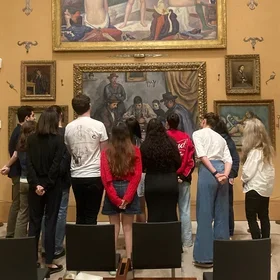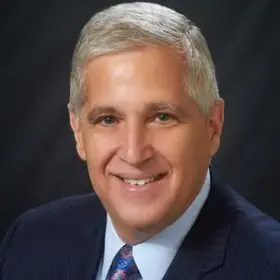By Cory Mangum, Course Associate, Insurance Management, Columbia University School of Professional Studies; Director of Risk Management, Primoris Services Corporation
Most Americans feel the current economic squeeze on their pocketbooks tighter than a hug from mom after arriving home on holiday break. Everything from housing to groceries is at unsustainable levels, with politicians scrambling for a relief valve. For low-income populations, these volatile financial times place immense strain on limited or nonexistent resources needed for basic survival and unlocking opportunities for future prosperity. According to Time magazine, the current poverty rate is higher than 12%, a sharp increase from just 5% in 2021. For context, the poverty line for a household of four in the United States is an income of less than $31,453. This makes up a concerning portion of the population, and of course some are in even more dire circumstances.
In his Pulitzer Prize-winning book Poverty, by America, Matthew Desmond describes how 1 in 18 Americans currently lives in “deep poverty,” which includes individuals earning less than $6,380 per year or families of four living on less than $13,100. That figure represents more than 18 million Americans, five million of whom are children. Poverty issues around the world are well documented, but it’s unthinkable that such a high number of Americans lack the most basic necessities to survive in such a prosperous nation. This prosperity must be afforded to all, or the system is simply not working as our Founders envisioned. We simply cannot let our vulnerable populations, our fellow Americans, fall deeper into opportunistic despair, where the American dream stays simply that: an unattainable dream that exists only in the lives of others.
Governments around the globe have attempted to tackle poverty within their borders, leading to mixed results. When destitute populations are in need, governments are looked upon to address the root causes, bring forth systemic changes and lift people out of financial despair. Non-governmental organizations, or NGOs, also play a critical role in working to increase poverty reduction and life opportunities for low-income populations through assistance programs from disaster relief to food security, but this article will focus on current challenges with governmental directed social programs, and the use of microfinance and microinsurance, solutions used in other countries, but not so much in the U.S.
The federal government oversees a myriad of social safety net programs to assist with basic needs, from housing to cell phone service. There are inherent flaws in these programs, however, that leave those in need without support to climb out of their current economic situations. For example, the Section 8 Housing Voucher administered by the Department of Housing & Urban Development (HUD) has been documented to have significantly long wait times, sometimes exceeding a decade. This leaves those needing housing assistance without many options to help escape poverty and achieve a more prosperous financial future.
A second example is Lifeline, the Federal Communications Commission (FCC)’s program to make cell phone and internet more affordable for low-income individuals and families. This program has an important purpose of increasing digital connectivity among low-income populations, but it has been challenged by reports of technical shortcomings, government neglect, and fraud control issues. In fact, issues with governmental assistance are also inherent in many other social safety net programs, from the Supplemental Nutrition Assistance Program (SNAP) to the Affordable Care Act (ACA). As Ron Haskins concluded in his testimony to the Senate Finance Committee back in 2012 on the state of poverty in America, the dramatic increase in federal spending has not led to an overall reduction in the nation’s poverty rate. This same tune rings true today.
The challenges in providing adequate support to low-income individuals and families provide opportunities for the private sector to insert itself into the conversation, offering products and services to fill the gaps left by governmental social programs. When thinking of how financial businesses could help low-income populations with basic needs assistance, most may picture credit or loan offerings. However, you may be surprised to learn that the insurance industry could be a gateway to a new market of financial assistance offering protection for low-income populations while promoting the benefits of implementing proper risk management. The insurance products that could be a good fit are not common here in the United States but are well known in other parts of the world, mainly in developing and underdeveloped countries. This market is referred to as “microinsurance.”
Microinsurance is a form of microfinance, with the overall focus of social protection and poverty reduction. The term “micro” represents a small amount of funds provided to an individual or family that ranges from a few hundred to several thousand dollars. This means low premiums and low coverage limits. The current microinsurance market is heavily focused on developing countries in Latin America, the Caribbean, Asia, and Africa. Some popular microinsurance products in these developing countries include weather index-based insurance to provide protection for farmers; funeral and burial microinsurance to cover the unexpected loss of a loved one; and microcredit and loan insurance to assist in loan repayment following an adverse event. Microinsurance also provides an alternative to lending services that can act as debt traps for low-income populations and only push them further down into financial anguish.
The success of these products is the Walmart business model of low margin and high volume, where scalability means profitability if pricing is accurate and drives revenues that outpace costs. This can be a difficult strategy to execute with such tight margins but technology is playing a key role in giving microinsurance companies the ability to improve pricing accuracy, reduce distribution costs, detect fraud, and speed up claim payments. An ancillary but vital component of any microinsurance company is their service offerings to policyholders, such as financial literacy and education, which not only increase the probability of consistent premium payments but also create more well-informed decision makers when it comes to personal and business finance.
Now could be the time to take a closer look at how domestic microinsurance markets might provide opportunities to assist lower-income communities escape generational poverty and seek out a more prosperous alternate future for themselves and their families. This is the tipping point where insurance goes from being a pull-off-the-shelf commodity to one that impacts society at the ground level, helping Americans find a path to financial independence and making the American dream real again—for all of us.
About the Program
The Columbia University Master of Professional Studies in Insurance Management equips a new generation of professionals to lead insurance businesses with advanced industry knowledge, strategic and operational expertise, and the skills to champion new ideas. The program is part-time, online, and instruction is asynchronous to accommodate working professionals. It consists of 10 required courses taken over four consecutive semesters (approximately 16 months, total, including a summer session), and two on-campus, in-person residencies, to the extent possible, prior to the start of and at the conclusion of the program.


